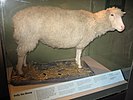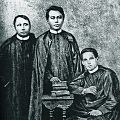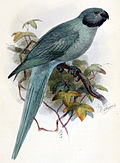Banksia attenuata, the candlestick banksia, is a tree in the family Proteaceae. Commonly reaching 10 m (33 ft), it can be a shrub of 0.4 to 2 m (1.3 to 6.6 ft) in dryer areas. It has long narrow serrated leaves and bright yellow inflorescences, or flower spikes. It is found across much of the southwest of Western Australia, from north of Kalbarri National Park south to Cape Leeuwin and then east to Fitzgerald River National Park. Robert Brown named the species in 1810. Within the genus Banksia, the close relationships and exact position of B. attenuata are unclear. The tree is pollinated by and provides food for a wide array of vertebrate and invertebrate animals in summer months, including the honeyeaters and the honey possum, a tiny marsupial. The plant regenerates from bushfire by regrowing from its woody base or from epicormic buds within its trunk. It can live for up to 300 years. It has been widely used as a street tree and for amenities planting in urban Western Australia, though its large size generally precludes use in small gardens. A dwarf form is commercially available in nurseries. (Full article...)
from Wikipedia featured articles feed http://ift.tt/2lsgX5W

































